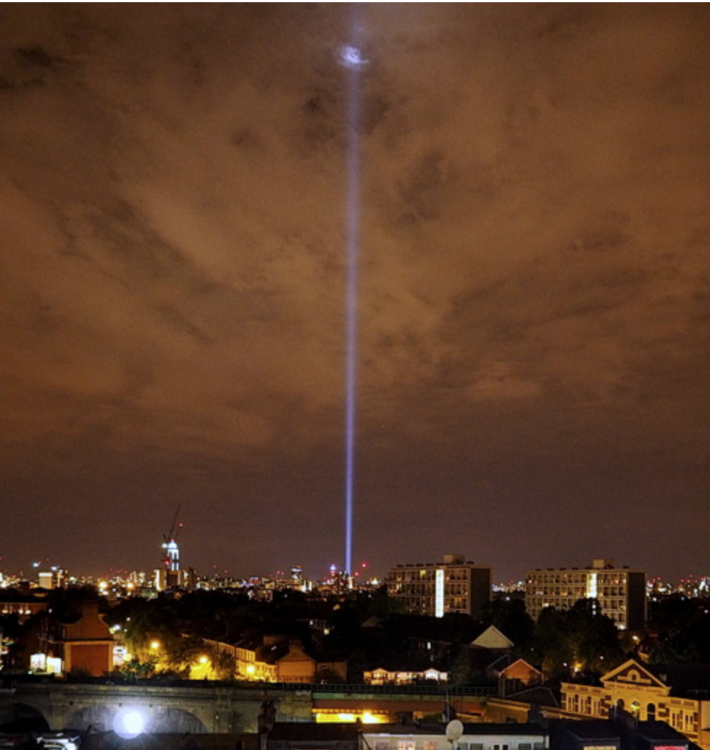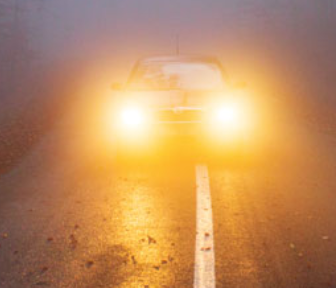-
Posts
2578 -
Joined
-
Days Won
21
Content Type
Profiles
Forums
Events
Everything posted by Ghideon
-

Attitude to unit. Let's imagine figuratively. Where's the mistake?
Ghideon replied to Ser's topic in Analysis and Calculus
Maybe I miss something? [math]a= \frac{\sqrt{2} }{2}, c=1, b= \sqrt{2}[/math] [math] \frac{c}{b} = \frac{1}{ \sqrt{2}}= \frac{\sqrt{2}}{ \sqrt{2} \sqrt{2} } = \frac{\sqrt{2} }{2}=\frac{a}{c}[/math] Is that what was intended? -
Today I learned the term aphophenia: seeing significance and meaning where there is none. It has interesting examples in for instance finance and statistics that I did not know had this common term. https://en.m.wikipedia.org/wiki/Apophenia
-

Attitude to unit. Let's imagine figuratively. Where's the mistake?
Ghideon replied to Ser's topic in Analysis and Calculus
Not sure but maybe: 1: Having two "Fig. 2" in the post making it harder to understand? 2: Not clearly stating what you wish to discuss, is it a blog post or a question? 3: Opening a new thread on a subject when told not to? -
Read it all or skip some parts? I think I'll combine the two above and carefully exclude all of the material for now. But if you are able to post a complete and consistent description of your idea, (preferably together with some math or references backing up your claims), I'll try to read and review it.
-

Electricity (split from Science Project (static charge))
Ghideon replied to westom's topic in Classical Physics
I asked since some observations and measurements of electrical phenomenons depend on frame of reference and observers' movements relative to charges . "Moving electric charges" does not state whether you are moving and the charge is stationary or if the charge is moving and you are stationery in some frame of reference. In science it is useful to have models* and definitions** that are consistent with that. *) In this case Maxwell and Special Relativity is enough as far as I know. Quantum mechanic related concepts such as Shrödinger's cat is not necessary. **) Again, in scientific discussions I prefer a definition such as Oxford: "Any effect resulting from the existence of stationary or moving electric charges." (https://www.oxfordreference.com/view/10.1093/oi/authority.20110803095745871) -
Warmest greetings of this festive season and best wishes for happiness this New Year! /G
-
AFAIK supernova models matches observations pretty well. Since you have reason to believe that to be plain wrong, can you provide a reference?
-

Moon question - daytime - please help.
Ghideon replied to Steve Triberfan1's topic in Other Sciences
That comment made me think in another direction. Could a moon dog* be mistaken for the moon itself? If there are partial clouds and the exact location of the moon on the sky was not known or measured? Light pillars** are also a related phenomenon. Once OP is back maybe some details could be clarified: -What was the apparent size of the full moon behind the clouds vs the size when sky was clear? -Was it a fuzzy blob behind clouds or a sharp circular shape? -Are we 100% sure the object was the moon and not some other object or phenomenon? Just to be clear, Im not talking about flying saucers. Over here we have had light shows etc that could look strange from a distance. Below is an example from London (I hav not had time to find a local photo) *) https://en.wikipedia.org/wiki/Moon_dog **) https://en.wikipedia.org/wiki/Light_pillar -
Good point! But I'm probably too stubborn to not try again in the next thread about this topic. Once they register again.
-

Electricity (split from Science Project (static charge))
Ghideon replied to westom's topic in Classical Physics
I tried that a few times. What's the point with your advice if you choose to ignore the questions? -
Again: what is ”auto-observed”?
-
Why are the quotes not in english? Yes, but you provided that reference. Maybe you need to provide additional references or explanations? Sorry, but the above explanation did not clarify what you want to discuss.
-

Electricity (split from Science Project (static charge))
Ghideon replied to westom's topic in Classical Physics
You seem to have missed: How do you modify your definitions of electricity when the observer is changing frame of reference? -
According to you, the ratio 1:X where X is irrational is not a ratio? Your three options seem to allow only for rational numbers. Please do so. I see no connection between the steps 1-5 and the wikipedia article.
-
Titel: Does not seem to be supported by the linked wikipedia article https://en.m.wikipedia.org/wiki/World_egg. The article lists various mythologies: Vedic mythology Zoroastrianism mythology Greek mythologyEgyptian mythology Phoenician mythology Chinese mythology Finnish mythology Polynesian mythology Dogon mythology Ant then briefly states something connected to cosmology. According to the article the term "cosmic egg" seems to have fallen out of favour, superseded by other models or terminology. (bold by me) Same source as OP: https://en.m.wikipedia.org/wiki/World_egg Question: How is this mythological concept of a "cosmic egg" tied to the mainstream science of today?
-

Electricity (split from Science Project (static charge))
Ghideon replied to westom's topic in Classical Physics
Using your definitions, what do you use to model and explain superconductivity? By your definitions, the current running through a superconductor not electricity? -

Electricity (split from Science Project (static charge))
Ghideon replied to westom's topic in Classical Physics
In scientific discussions wouldn't that add confusion? In science it is not uncommon to analyse electromagnetism and electrical phenomenons in different frames of reference. A charge that is stationary in one frame of reference may be moving seen from another frame of reference. A definition of electricity that includes both stationary charges and moving charges does not necessarily have to change when moving between frames of reference. And then, for discussing specific phenomenons, there are "Electrostatics", Electrodynamics" etc each having their own scientific definition. That said, I agree with: But in science I prefer rigorous definitions. In some everyday talk the situation is different. (My first language is not english, providing a list of translated example could easily miss the point and be off topic) -
How about answering the questions first, instead of adding new stuff? (bold by me) No I can't. I want more rigor in a scientific discussion.
-
What is "auto-observing"? What is "clumps of matter"? What is "999,999,990,000,000 clumps of matter each second", is that within some defined volume?
-

Moon question - daytime - please help.
Ghideon replied to Steve Triberfan1's topic in Other Sciences
I do not think that is a plausible explanation. Let's try some thought experiments to find arguments. This is provided as an example how you could probe this (and maybe other ideas): 1: Assume that clouds and snow in combination reflects more moonlight than snow or clouds in separation, enough to lighten up the dark areas of the moon. If that assumption is correct, how would the night-side of the earth, when lit by moonlight, look like from space ? If areas with snow and clouds are more reflective that snow or clouds there would be bright patches where snow is covered by clouds. I don't not think that matches what is actually observed. 2: Assume that light from earth could make the dark area of the moon look as bright as the sunlit area of the moon (so that for instance a half moon looks like a full moon). How bright would the earth be when seen from the moon? Almost as bright as the sun? I don't not think that matches what is actually observed. 3: Use the available incoming light from moon and assume that all of it is reflected back towards the dark area of the moon. Then calculate how much of that light that is reflected off moon again to be visible by an observer back on earth. The calculation would reveal that available light is not enough to make areas of the moon that is not lighten by sun look bright as the sunlit area. I think that this 3rd case could be generalized to mathematically support that reflections between two bodies could not possibly create the observed effect. The second reflection of the observed body will always be darker than the area where the first reflection occurs. That said, I might speculate* a little about the observation. What happens when car headlights are visible through fog? The light is spread out and the amount of spreading depends on the amount of fog. If the car's headlights are not circular but in some other shape, is that shape visible through the fog? With the "right" amount of fog would the shape of the moon be obscured but the light still visible, spread out by the fog, so that the light source (moon) looks circular? The following picture does not necessarily support my statement, it just serves as an illustration: Does the car have circular or non circular lights? *) I do not have time to track down any sources supporting my statements. Hence I stat it as questions and not claims and label it speculative at this point. -

Moon question - daytime - please help.
Ghideon replied to Steve Triberfan1's topic in Other Sciences
Hello Steve. I'll try to answer the directions question and not speculate or try to explain the actual effect. I do not think that reflection of light off clouds is a plausible explanation for the observed effect. Some arguments: -If it would be possible for reflective clouds to light up the dark area of the moon then the same effect would be observable when watching the moon from a snowy landscape. Snow has similar (or higher) albedo* and would reflect the same for more light from earth to moon. -If the clouds would reflect enough light to lighten up the moon's dark parts then the effect would be visible also where there are no clouds straight above. Light hitting the surface of the moon is not reflected straight back only , it is reflected and spread at other angles as well. You would have seen a full moon also before and after the clouds passed. That said, earth does illuminate the moon slightly. But the light is much fainter than sunlight: Source: https://medium.com/starts-with-a-bang/ask-ethan-how-bright-is-the-earth-as-seen-from-the-moon-627eb1554ca9 Wikipedia have some info on earthsine: https://en.wikipedia.org/wiki/Planetshine#Earthshine Nasa page with some pictures and info: https://earthobservatory.nasa.gov/images/83782/earthshine *) Different types of clouds exhibit different reflectivity, theoretically ranging in albedo from a minimum of near 0 to a maximum approaching 0.8. Fresh snow up to 0.9. (https://en.wikipedia.org/wiki/Albedo) -
You have selected the correct forum then. Here you could ask questions for instance about for instance -How rocket engine works in vacuum -What the laws of physics and mainstream science predict -How to make calculations of the above -References to reliable material There are plenty of rather skilled members that will provide answers. Are you familiar with the basics of Newton? That could be a good start to understand what physics have to say about rocket takeoff and thrust in vacuum.
-

Electricity (split from Science Project (static charge))
Ghideon replied to westom's topic in Classical Physics
If static charge is not electricity, can you provide a definition of what a static charge is? The following definition matches what how it was defined when i studied: Electricity: a form of energy resulting from the existence of charged particles (such as electrons or protons), either statically as an accumulation of charge or dynamically as a current. (Oxford English Dictionary) -
Do you mind providing some evidence or arguments about why you believe that to be the case? Mainstream models of physics disagree with your statement. If you prefer some videos showing how it works you could google for "vacuum chamber rocket experiment".




